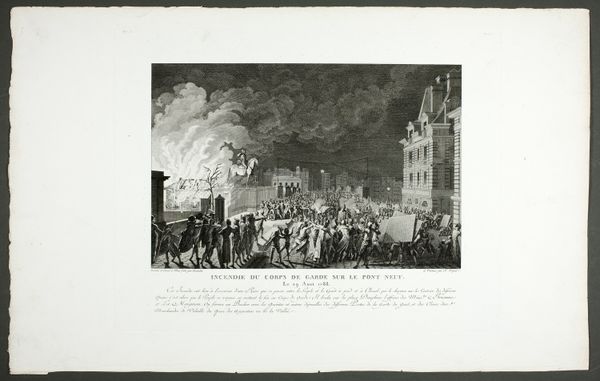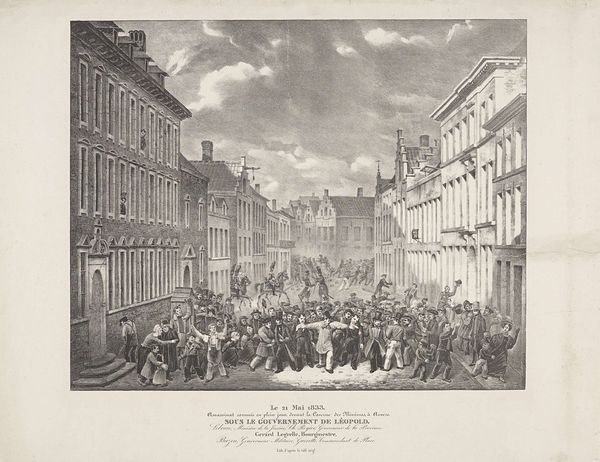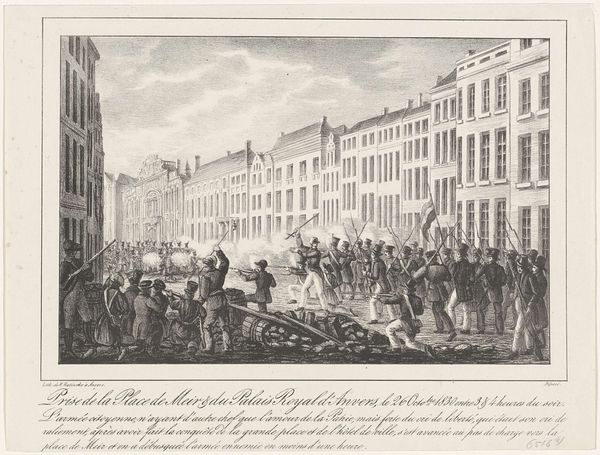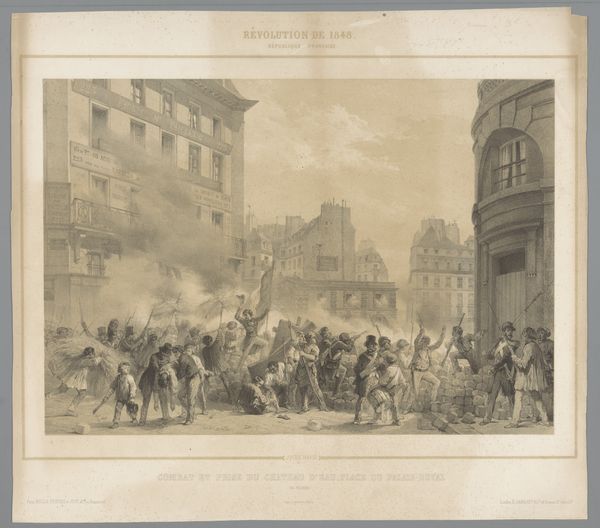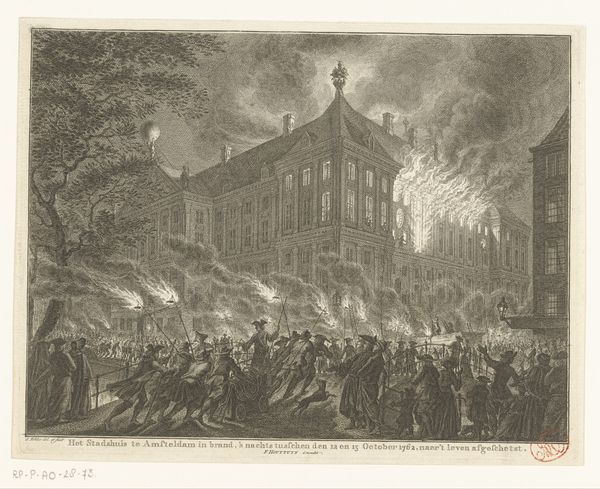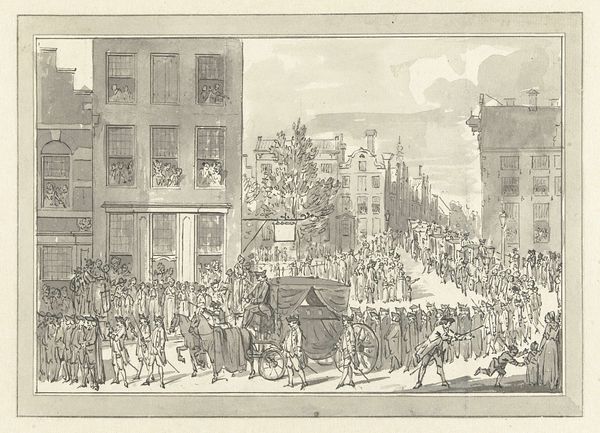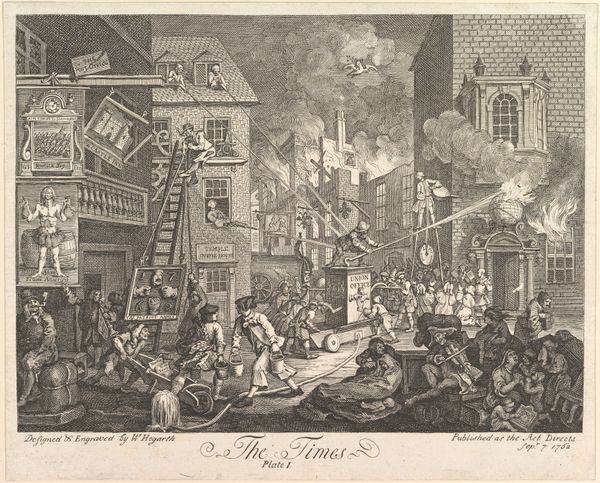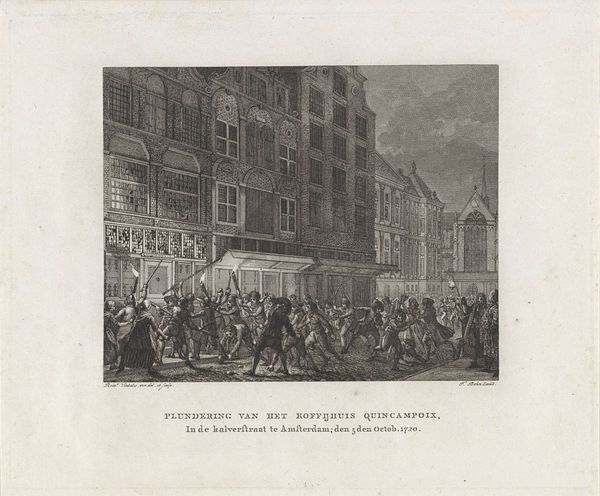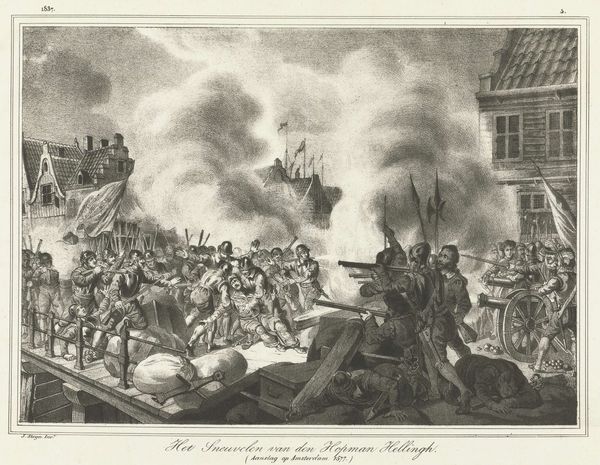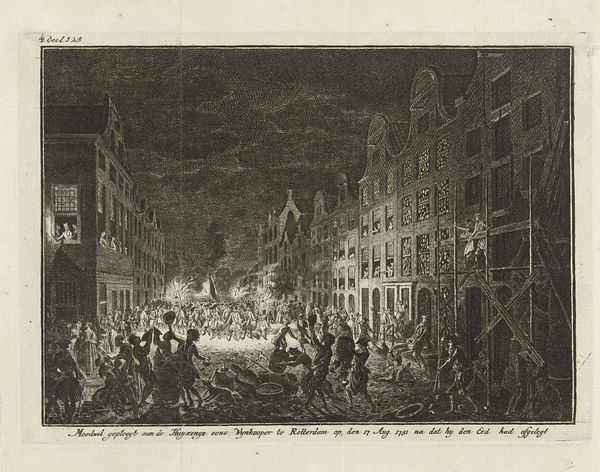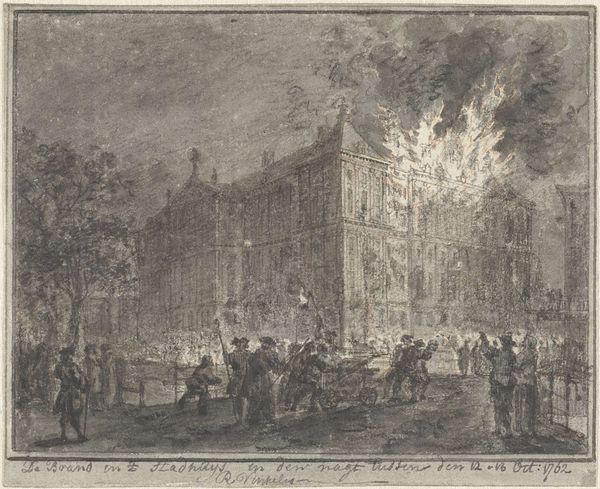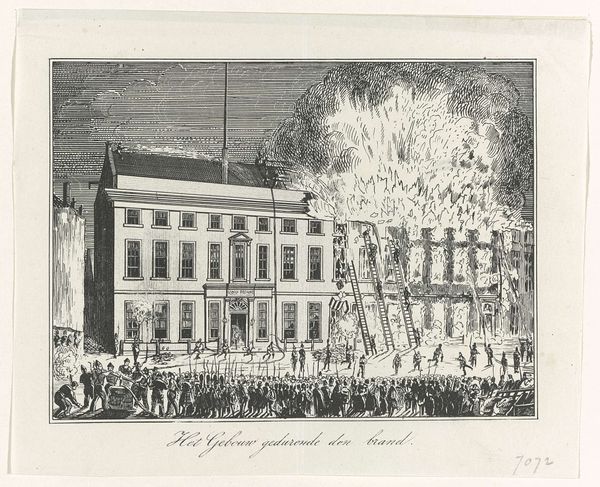
Treffen tussen de Negende Burgercompagnie en Orangisten te Rotterdam, 1784 1784
0:00
0:00
Dimensions: height 362 mm, width 398 mm
Copyright: Rijks Museum: Open Domain
Curator: At first glance, this engraving, "Treffen tussen de Negende Burgercompagnie en Orangisten te Rotterdam, 1784," strikes me as chaotic. The clash depicted seems raw and intensely emotional. Editor: Indeed. Formally, notice the contrast. The buildings are depicted with precise, almost mathematical lines, whereas the figures are rendered with frantic energy. That stylistic decision creates an interesting tension, doesn’t it? Curator: Absolutely. And the symbolism is rife. It depicts the clash between the Ninth Civic Company and Orangists, each group a vessel of specific ideals within a rapidly changing society. Those flickering torches held by the citizens aren't just sources of light; they symbolize enlightenment ideals, brandished like weapons. They believed in civic virtue. Editor: Consider how the engraving leads the eye. The depth created by receding buildings forces our focus onto the throng. What appears like mere crowd movement, at first glance, soon unravels to show us distinct characters—each tiny stroke an emotional story playing out across the page. The faces are generic, yet still legible. Curator: The act of depicting such a contemporary event also signifies an interesting shift in civic identity. Art becomes a means to capture and transmit collective memory. These are no legendary heroes; instead, we see ordinary citizens grappling with extraordinary conflict. What does such accessible representation signify to a 1784 audience? Editor: Semiotically speaking, the work presents the city of Rotterdam almost as an active witness, buildings like stony faces observing the drama unfold below. The repetition of figures also creates a sense of overwhelming mass, emphasizing conflict. Curator: So while it's tempting to view this simply as a historical record, perhaps it carries more weight, representing civic engagement or unrest more broadly, something timeless? Editor: I see it less about timelessness, more about visualising tension. Whether intentional or not, the visual language of perspective versus mass action adds to that reading. Curator: A powerful image; it’s intriguing to witness history distilled into such striking visual patterns. Editor: Definitely. It really invites one to look deeper.
Comments
No comments
Be the first to comment and join the conversation on the ultimate creative platform.

